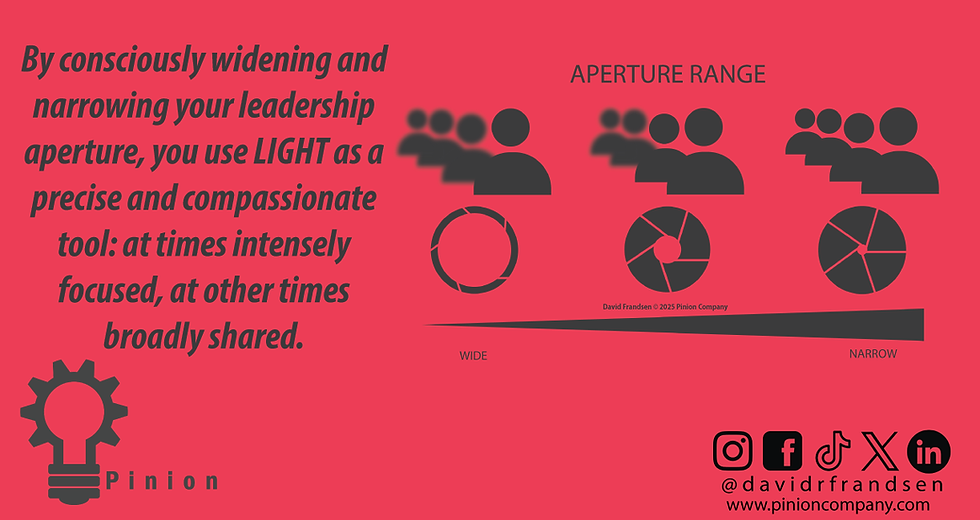The Toxic Impact of Ego in Organizations: Why Confidence Alone Isn’t the Problem
- David Frandsen
- Nov 5
- 3 min read

There’s a vital spectrum many of us navigate between lacking confidence and crossing into excessive ego. I know this well from my experience playing basketball as a kid. Early on, my confidence was barely there—I worried so much about making mistakes that I rarely took shots or dribbled, often relying on teammates to lead the way. But over time, through practice, encouragement from coaches and teammates, and gaining experience, I grew into a confident player willing to take risks and assert myself on the court.
As my confidence developed, there were moments when I became quite assured, sometimes even bordering on cocky. Fortunately, sports remind all of us that there’s always someone more talented out there, humbling us and making clear there is never an endpoint to learning and improvement. This ongoing dance between confidence and humility has felt familiar ever since—the same balance that leaders must find to prevent ego from undermining their effectiveness or the culture they shape.
The Confidence-Ego Continuum
To help make sense of this, I created the Confidence-Ego Continuum, a practical framework to visualize the range many leaders navigate:
· At 0, there’s no confidence—hesitation, fear, and avoidance dominate.
· Somewhere in the middle, between 4 and 6, sits healthy confidence—self-assured yet humble, open to feedback, and willing to learn.
· Beyond 7, confidence veers into overconfidence, and as the scale approaches 9 or 10, ego dominates with defensiveness, control, and disconnection from others.
The sweet spot is that middle zone. Leaders who balance confidence with humility inspire trust and openness. Crossing into ego is where trouble begins—for teams, leaders, and organizational culture alike.
The Broader Cost: Trust, Morale, and Innovation
Ego’s toxic influence is not limited to individuals but spreads through organizational culture, damaging psychological safety—the vital freedom employees need to share ideas, admit mistakes, and innovate without fear. The erosion of psychological safety leads to decreased trust, morale, and ultimately innovation. Environments heavy with ego drain emotional resources, making collaboration and self-control difficult, and replacing trust with power struggles.
Top talent often leaves, leaving behind a culture weakened by suspicion and politics.
Ego’s Hidden Origins: Systems and Culture
Ego isn’t just an individual flaw; it is often cultivated by organizational systems. Cultures that glorify lone “hero leaders” and prioritize winning at all costs provide fertile ground for ego to flourish. Arrogance becomes normalized while humility is mistaken for weakness.
Research shows individuals lacking recognition or constructive feedback compensate by asserting ego-driven behaviors to protect self-worth. Thus, systemic conditions can reward arrogance and punish vulnerability.
Leadership and the Four Ego Monsters
While ego affects an organization broadly, leaders hold immense influence in either curbing or unleashing it. To help leaders recognize ego’s most damaging forms, I developed a concept called the Four Ego Monsters—distinct personas representing ego-driven leadership pitfalls:
· The Controller: Micromanages out of fear, stifling autonomy.
· The Defender: Resists feedback and blames others.
· The Credit-Taker: Hoards praise and deflects responsibility.
· The Know-It-All: Dominates dialogue and silences fresh ideas.
These ego monsters embody leadership mistakes that erode trust and hinder growth. Recognizing them is an essential step for leaders seeking to tame ego and build healthy, thriving teams.
For a deeper dive into these ego monsters and strategies to overcome them, I invite you to explore my companion article: Beware the Four Ego Monsters: Leadership Traps That Sabotage Teams.
Leadership Beyond Ego: Humility as Strength
The antidote to ego’s toxic influence is humility—a trait often misunderstood. True humility is not weakness but strength rooted in self-awareness and openness. Leaders who embrace humility:
· Own mistakes and model vulnerability.
· Encourage honest feedback loops.
· Celebrate team achievements over individual glory.
· Invest in emotional intelligence and regular 360° evaluations.
Humility replaces ego-defense with empathy and promotes authentic engagement and resilience.
Final Reflection: Leading with Purpose Over Pride
Ask yourself: Is my leadership about being right or about getting it right? Do I seek to win arguments or to build trust? Am I protecting my pride or advancing our progress?
Ego feeds on recognition, but leadership thrives on connection. Finding this balance helps shift leadership from controlling the spotlight to cultivating collective light—helping teams and organizations not just succeed, but thrive with resilience and trust.




Comments